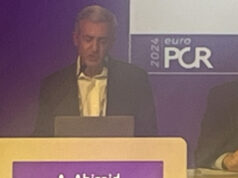
An analysis of data from the SPYRAL HTN-ON MED trial of the Symplicity Spyral (Medtronic) radiofrequency denervation system for the treatment of uncontrolled hypertension has found that the technique can be expected to provide “good value for money” as a therapeutic approach.
The analysis, authored by Andrew Sharp (University Hospital of Wales and Cardiff University, Cardiff, UK) et al and published in the European Heart Journal – Quality of Care & Clinical Outcomes, examined the cost-effectiveness of radiofrequency renal denervation for the treatment of the broader uncontrolled hypertension patient group in the setting of the UK healthcare system.
Recent US Food and Drug Administration (FDA) approval for the therapy and updated recommendations from the European Society of Hypertension (ESH) in its 2023 Management of Arterial Hypertension guidelines will “substantially increase global access to this therapeutic option”, the study’s authors write. These developments, they add, contribute to a growing interest in understanding the health-economic implications of radiofrequency renal denervation adoption.
A decision-analytic model based on multivariate risk equations projected clinical events, quality-adjusted life years (QALYs) and costs. The model consists of seven health states, hypertension alone, myocardial infarction (MI), other symptomatic coronary artery disease, stroke, heart failure, end-stage renal disease and death.
Risk reduction associated with changes in office systolic blood pressure (oSBP) was estimated based on a published meta-regression of hypertension trials. The base case effect size of -4.9mmHg oSBP (observed versus sham control) was taken from the SPYRAL HTN-ON MED trial of 337 patients, with the costs based upon NHS England data.
Researchers evaluated the incremental cost-effectiveness ratio (ICER) against the National Institute for Health and Care Excellence (NICE) cost-effectiveness threshold of £20,000–30,000 per QALY gained. Findings from the study showed that radiofrequency renal denervation resulted in a relative risk reduction in clinical events over 10 years (0.80 for stroke, 0.88 for MI, and 0.72 for heart failure) with an increase in health benefit over a patient’s lifetime, adding 0.35 QALYs, at a cost of £4,763, giving an ICER of £13,482 per QALY gained. Findings were robust across tested scenarios, the researchers report.
“The analysis found that an effect size of 4.9mmHg, as observed in the SPYRAL HTN-ON MED study can be expected to lead to meaningful outcome improvement and related downstream cost savings in the long-term, which render the intervention good value for money,” Sharp et al write. “Specifically, a significant reduction of 20% for stroke and 12% for MI was found for a ten-year horizon in treated versus control subjects, indicating the potential for radiofrequency renal denervation to reduce or delay major hypertension sequelae.”
“The analysis took a conservative approach, using a base case blood pressure reduction that is lower than that achieved in the real world Global registry and yet still met the NICE standard for cost effectiveness,” Sharp told Cardiovascular News.













